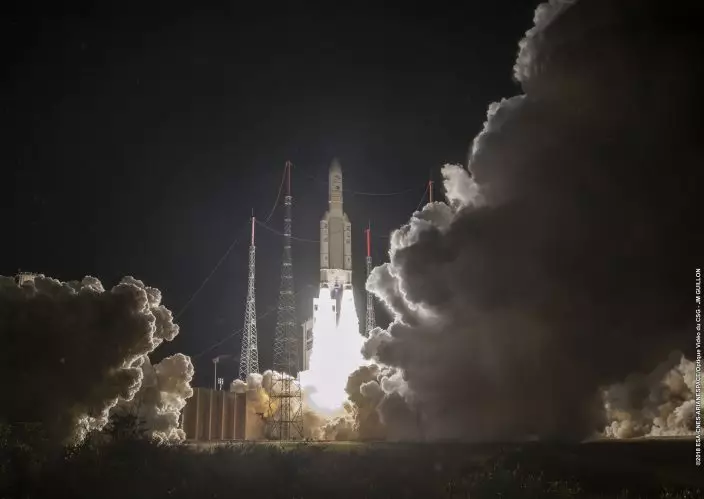European and Japanese space agencies say an Ariane 5 rocket has successfully lifted a spacecraft into orbit for a joint mission to Mercury, the closest planet to the sun.
The European Space Agency and Japan Aerospace Exploration Agency say the BepiColombo spacecraft successfully separated and was sent into orbit from French Guiana early Saturday to begin a seven-year journey to Mercury.
The mission is complicated by the intense gravity pull of the sun, forcing the spacecraft to take an elliptical path that involves two fly-bys of Venus and six of Mercury itself.

In this photo released by European Space Agency (ESA), the Ariane 5 rocket carrying BepiColombo lifts off from its launch pad at Kourou in French Guiana, for the mission to Mercury, Saturday, Oct. 20, 2018. (JM Guillon2018 ESA-CNES-Arianespace via AP)
Once the spacecraft arrives in late 2025, it will release two probes that will independently investigate the surface and magnetic field of Mercury.


